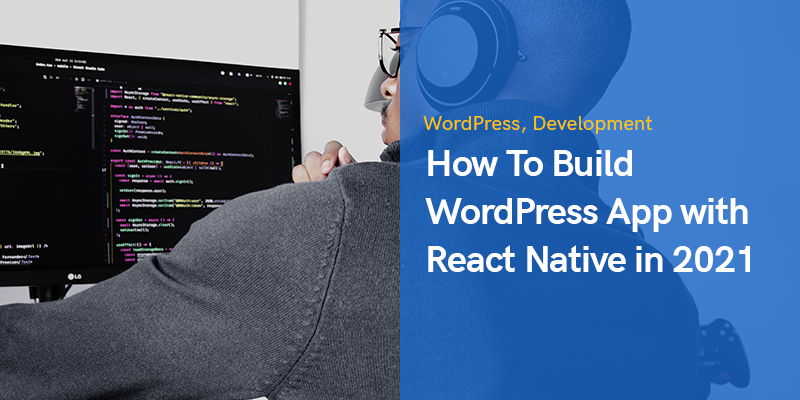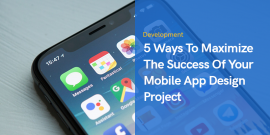
How To Build WordPress App with React Native in 2023
WordPress is a free open source platform built on top of PHP and MySQL. According to research, it powers 40% of the sites that are featured on the web.
The main function of the system is content management. To do this, it has a plugin architecture and thousands of themes / templates, which makes blogging faster and easier. It can be configured in just one hour.
In WP, you can create apps to improve the user experience. React Native is one of the most powerful frameworks for this purpose today. It allows you to create a convenient and practical interface based on declarative components using only JavaScript. That is why React Native developers are so popular in the labor market today.
In addition, WP is a CMS (content management system), which is in demand and popular all over the world. It also has a built-in REST API that allows you to retrieve, edit, and delete data from your application using a simple HTTP request.
Today we are going to talk about how to create a WordPress application using the popular React Native framework.
What is React Native?
React Native is a tool where you can create a user interface. Its purpose is to render the content of a web page by dividing each one into small pieces / components. It is user-friendly and has high performance, especially when working with rapidly changing data. In it, it is enough to write modular code one-time for further reuse.
Other features and benefits:
- JavaScript is used to write the code, namely React;
- fast application writing even for multiple platforms;
- a large library of native and non-native components;
- you can use a browser to configure and generate;
- hot-reload is provided for quick viewing of changes;
- to make changes to the code, you do not need to rewrite it from the very beginning;
- for rendering components, the native data of the system itself is used, which significantly increases the performance of such a UI;
- you can create your own library for RN, which will use the native functionality of the system;
- React Native is used by the world's largest companies Facebook, Instagram, Skype, Tesla, Baidu, Bloomberg, etc.
Despite the large selection of technologies in cross-platform mobile application development, RN remains the most in demand. So, a similar system Apache Cordova, which allows you to use HTML + CSS + JavaScript + native functionality of the platform on which the application is launched, has a significant disadvantage – performance.
Application creation process
There are several steps involved in creating a mobile WordPress blog app using the React Native framework. Let's get started.
Installing and Configuring the React Native Package
First, you need to install the React Native framework on the device. Then open the project and give it a name that will be used throughout all stages of development.
Installing the Nativebase package
Nativebase is a bundle of nodes that use some of the UI components in React Native. Flexbox or other customization packages are fine for these purposes as well, but Nativebase opens up more options to work with. To install it inside the project, you need to run the following command:
npm install native-base –save
Installing the React-native-render-html package
React-native-render-html is a native javascript component for iOS / Android with 100% rendering of HTML code. It's easy to use and customize, and any stream can be rendered with.
When installing this package, the entire publication, including its components, will be displayed in HTML format. But React Native only supports its own components, i.e. all HTML tags will be automatically adapted to the program. To install, just enter the command from the root folder of the project:
npm install react-native-render-html --save
Installing the Moment package
It is the largest JavaScript date library needed to parse and manipulate them. WordPress requires it to check published dates for readability. To install, you need to enter the following command from the root folder of the project:
npm install moment --save
All Packages Are Installed
The standard link to react-native does not need to be launched every time after installing the next package, it is enough to do it once after all of them are installed. Then:
- Importing all React components and App.js packages.
- Adding a class named App and exporting it.
- Inside the class, you need to form a constructor and elements to store the data of the API messages.
- Setting up the componentDidMount () function.
- Rendering.
After that, you need to deal with the Content section. This.state.posts.map (item, index) is displayed across the entire post array and contains WP-API data. It is displayed in the form of cards, each of which contains 4 Card Items:
- Date of publication and title. Item.title.rendered – title specified directly. Item.date publication date is written in a non-standard format that is easy to customize.
- Selected image. You must see all the images of each post. WordPress stores them in one database. To find what you need, you should use an identifier that will do it yourself.
- The text. You can use the react-native-render-html package to transform HTML tag text into native components.
- The author name. It can also be picked up automatically by the identifier.
It is also available to add an icon to the app and / or create a signed apk.
Conclusion
React Native is a powerful and robust framework that is used to build a variety of JavaScript mobile applications. The ease of creating them is backed up by many additional WordPress features. Its main advantage is the ability to quickly create applications for several platforms at once. React Native developers are widely demanded all over the world and does not intend to change positions in the coming years.
We've covered how you can build a WordPress application using React Native. According to the data, it is clear that the process does not take much time and resources. Use the guide and you will succeed.
Recommended Posts

7 Best WordPress Marketing Themes 2023
April 29, 2024

Top 6 Knowledge-Based Plugins for Your WordPress Website
April 29, 2024
